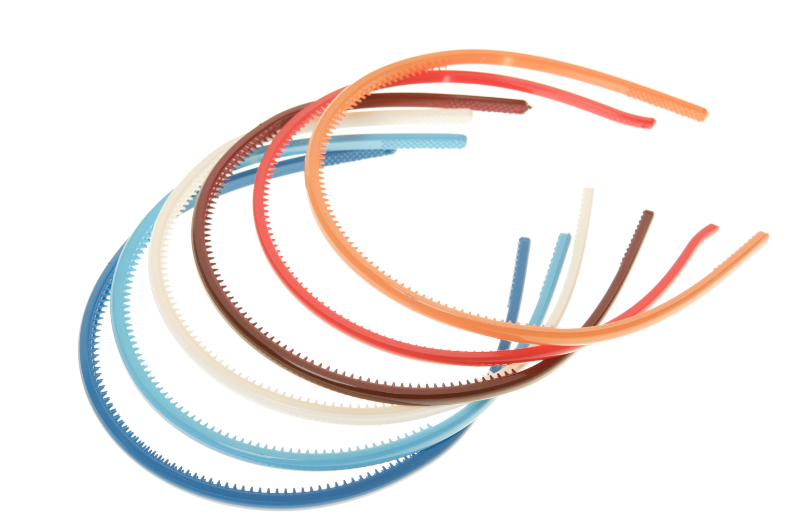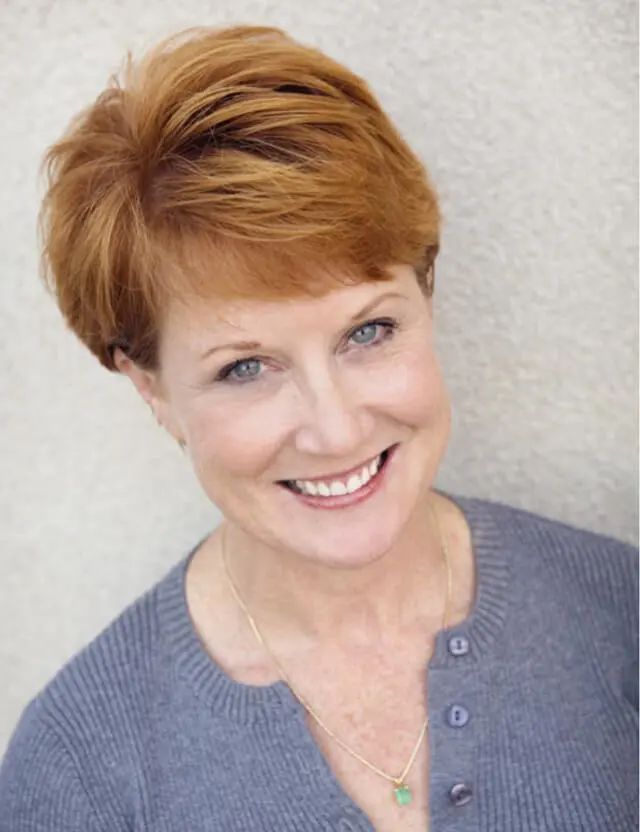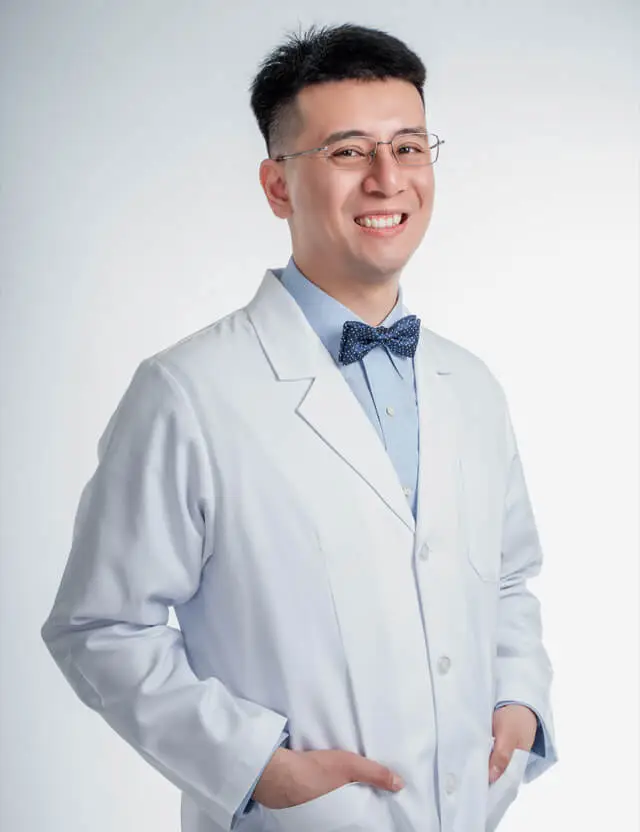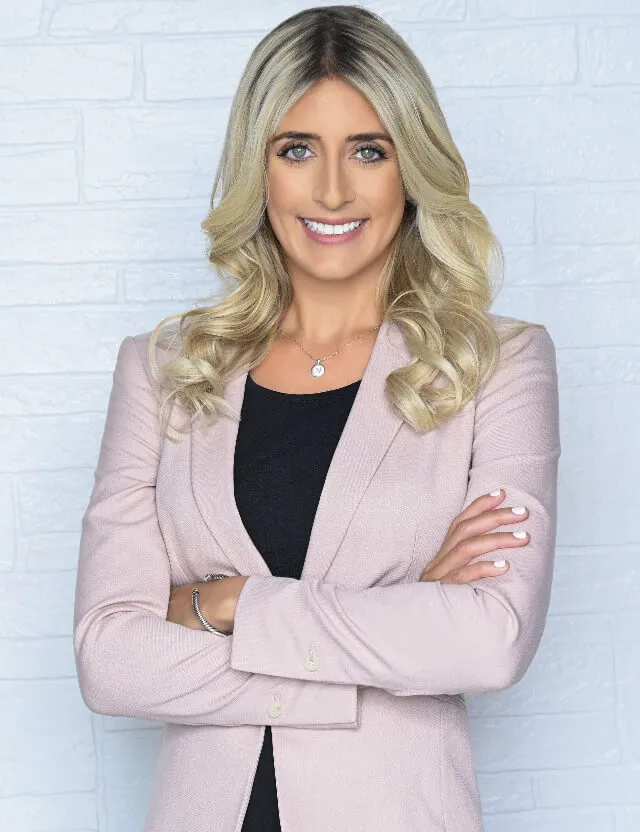Headbands do not directly cause receding hairlines, but when worn tightly and regularly, they can contribute to traction alopecia, a kind of hair loss caused by continuous tugging on the hair, which can worsen a receding hairline in those who are already prone to hair thinning.
However, genetics, hormonal fluctuations, and general hair care habits are more important in developing a receding hairline.
This article covers scientific studies, professional perspectives, and the effects of headbands on hair health. We’ll examine whether headbands cause receding hairlines, what variables impact hair loss, and how to avoid damage while using them.
Does Wearing Headbands Cause Hair Loss?
The short answer is that while headbands do not directly cause hair loss or receding hairlines, certain kinds of hairbands and how they are used might contribute to hair loss and potentially aggravate conditions that lead to hairline recession.
Receding Hairline Causes and Factors
Women can also have receding hairlines, which are usually associated with male pattern baldness (androgenetic alopecia). The chief causes of a receding hairline are heredity and hormonal changes.
Men’s hair loss is heavily influenced by the hormone dihydrotestosterone (DHT). DHT, a testosterone derivative, is known to constrict hair follicles, resulting in hair thinning and loss. For women, hormonal changes, particularly those associated with menopause, can cause a receding hairline.
According to the American Academy of Dermatology (AAD), genetics are important in deciding who will develop a receding hairline. If you have a family history of hair loss, you are more likely to experience it yourself.
Aside from heredity, other factors that can cause hair loss include stress, certain medical conditions, and health issues such as thyroid disease. In some cases, noticeable hair loss might not become apparent until after a few months of exposure to stressors or other contributing factors.
The Effect Of Headbands On Receding Hairlines

Headbands, particularly those worn firmly or for long periods of time, can cause to what is called traction alopecia, a kind of hair loss. Traction alopecia develops when there is persistent strain or tugging on the hair. Repeated stress can damage hair roots, causing breakage and, eventually, permanent hair loss.
While traction alopecia differs from androgenetic alopecia, wearing tight headbands might worsen a receding hairline in people who are vulnerable to hair fall. The constant pressure from tight headbands can exacerbate thinning hair and lose hair in those already predisposed to hair loss.
According to recent research released by the National Center for Biotechnology Information (NCBI), traction alopecia is more likely in those who often wear hairstyles or accessories that pull on their hair. This includes tight ponytails, braids, buns, and headbands.
However, it is vital to know that not all headbands will harm your hair. The material, breadth, and tightness with which the headband is worn all influence how it affects the hairline.
For example, a soft headband worn freely is less likely to cause injury than a small, tight elastic band. Wearing headbands made from gentle materials and with proper fit can contribute to healthy hair growth.
Genetics in Hair Loss
Genetics have a significant role in whether or not a person develops a receding hairline. If you have a family history of hereditary hair loss, you may be more sensitive to the effects of traction alopecia produced by headbands.
Understanding your genetic tendency allows you to make more educated decisions regarding your healthy hair care practices.
A study conducted in 2021 found that those with a family history of male or female pattern baldness are more likely to acquire comparable hair loss patterns. This genetic propensity is mostly caused by mutations in the androgen receptor (AR) gene, which affects the body’s reaction to androgens such as DHT.
Those with a hereditary tendency to hair loss should take extra precautions to prevent external factors that may hasten hair fall, such as tight headbands.
Tips for Avoiding Receding Hairlines While Wearing Headbands Men
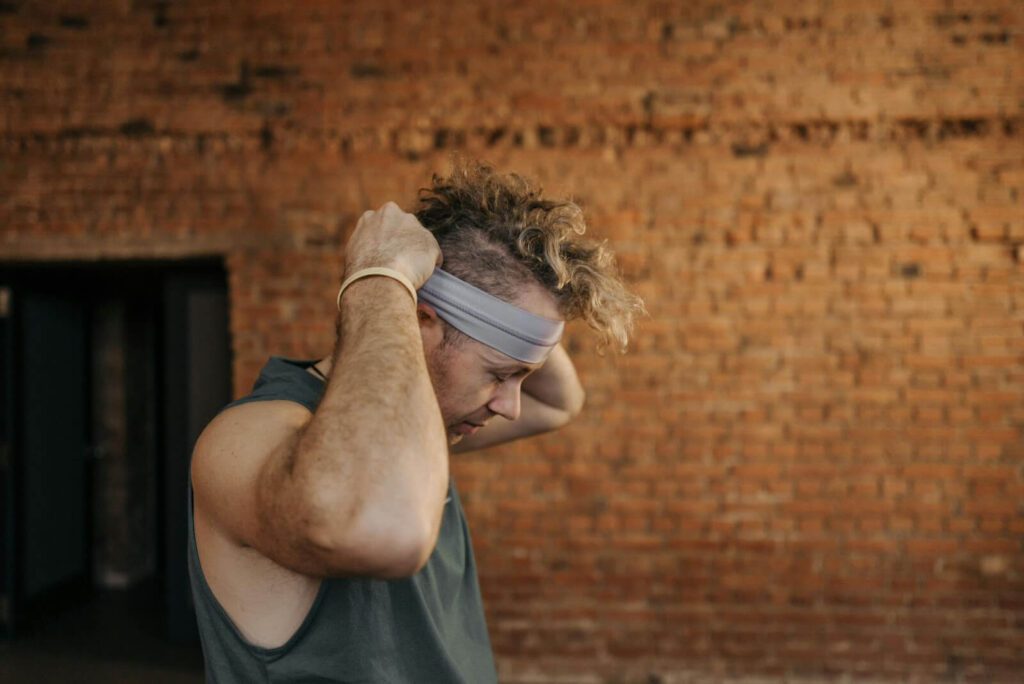
If you like wearing headbands but are concerned about the possibility of hairline regression, you may take a few precautions to reduce the risk:
- Choose the Right Material: Look for soft headbands made of soothing fabrics such as cotton or satin. These materials minimize friction with the hair and scalp, lowering the risk of hair breakage and helping to promote healthy hair growth.
- Avoid Tight Headbands: Tighter headbands put additional strain on your hair follicles. Choose headbands that fit comfortably without straining your scalp to maintain healthy hair. This is crucial to prevent hair loss and avoid further damage to your hairline.
- Limit Wear Time: It is not recommended to wear headbands for long periods. Give your hair and scalp regular rest to lessen the risk of traction alopecia and support healthy hair care practices.
- Alternate Hairstyles: Don’t wear headbands every day. Change and vary your hairstyles to avoid persistent strain in the same places of your head. This can help prevent hair loss and keep your hairline healthy.
- Maintain Scalp Health: Keeping your scalp clean and moisturized might help you have healthy hair follicles. Regular scalp massages can help boost blood circulation, which promotes hair growth and supports healthy hair care practices. This can also help prevent breakage and ensure that your hair remains strong.
Best Alternatives for Traditional Headbands
If you’re worried about how standard headbands may affect your hairline, explore these alternatives:
- Scrunchies: Scrunchies are pleasant on the hair and scalp because of their soft fabric and large surface area. They can keep their hair back without exerting too much stress, making them a good choice to prevent hair loss.
- Hair Clips: Hair clips provide stylistic variety without the continual pressure that headbands may cause. They come in various different headband styles and allow you to secure your hair without fear of hairline damage.
- Loose Braids or Twists: Wearing your hair in loose braids or twists keeps it off of your face without placing strain on your hairline. This is a great way to prevent breakage and avoid stressing your hairline.
- Wide Fabric Headbands: If you prefer headbands, use broader fabrics that evenly distribute pressure over your scalp. These are less prone to generate traction on a particular section of your hairline and can help prevent hair loss.
How to Stimulate Hairline Regrowth
If you’re experiencing hair loss or are concerned about hair thinning caused by headband use, there are a few treatments and tactics that can help encourage hairline regeneration and enhance overall hair health.
Minoxidil
Minoxidil (Rogaine) is an over-the-counter topical medication that has been licensed by the FDA to promote hair regeneration in both men and women. It works by boosting blood flow to the scalp and hair follicles, hence stimulating hair growth.
Minoxidil comes in various strengths (usually 2% and 5%) and is applied straight to the scalp twice daily. It’s crucial to remember that outcomes might vary, and constant application is required to keep hair growing.
Low-Level Laser Therapy
Low-level laser Therapy (LLLT) is a noninvasive therapy that employs red or near-infrared light to stimulate hair follicles. This treatment stimulates cellular activity in the hair follicles, resulting in thicker, healthier hair growth.
LLLT devices include laser combs and caps designed for at-home use. According to scientific evidence, including a 2021 study, LLLT can be useful in treating hair loss and boosting regeneration when used consistently.
Scalp Massage
Regular scalp massages will assist enhance blood circulation to the hair follicles, supplying vital nutrients and oxygen to promote hair growth. Massage the scalp with your fingertips for several minutes daily, using soft pressure and circular strokes.
Incorporating essential oils such as rosemary or peppermint oil into your scalp massage practice will improve blood flow and bring extra advantages to hair health.
Nutritional Supplements

Certain vitamins and minerals are essential for healthy hair development. Biotin, vitamin D, iron, and zinc supplements have been shown to improve hair health and prevent additional hair loss. Before taking any new supplements, consult with a healthcare expert to confirm that they are appropriate for your specific requirements.
Healthy Diet
Maintaining overall health, including hair health, requires a well-balanced diet rich in nutrients. Consume foods rich in vitamins A, C, E, and omega-3 fatty acids, such as leafy greens, berries, nuts, seeds, and fatty fish. These nutrients can nourish the scalp and hair follicles from inside, resulting in thicker, healthier hair growth.
Prescription Medicines
In some circumstances, prescription drugs may be suggested to treat underlying hormonal imbalances or illnesses that cause hair loss. Finasteride (Propecia) is an FDA-approved medicine for treating male pattern baldness by inhibiting the hormone DHT, which causes hair follicles to shrink in genetically predisposed men. Hormone treatment may also be recommended for women who have hormonal hair loss.
Lifestyle Change
Adopting good living choices can improve general hair health and reduce stress, which is known to be causing hair loss. Ensure you get enough sleep, manage stress using relaxation techniques like meditation, and avoid smoking and excessive alcohol intake, which can harm hair development and general health.
Frequently Asked Questions
Does a metal headband cause hair loss?
Metal headbands can cause hair loss if worn firmly or repeatedly, as they tug on the hair. To put less strain on your hair follicles, use looser, cushioned styles.
Does wearing a headband damage hair?
If a headband is overly tight or used regularly, it might cause hair breakage or traction alopecia. To reduce damage, choose for softer, looser headbands and avoid wearing them for lengthy periods of time.
Does wearing a hairband cause hair loss in men?
Wearing a hairband can cause hair loss in males if it pulls on their hair frequently, resulting in traction alopecia. To avoid this, choose looser bands and wear them less frequently or firmly.
Summary
While headbands are not a direct cause of receding hairlines, poor use—such as wearing tight headbands for lengthy periods—can lead to traction alopecia, a common concern. Individuals susceptible to hair loss due to heredity may find that tight headbands accelerate hairline recession.
To maintain your hairline while still reaping the advantages of headbands, select the appropriate materials, avoid headbands that are too tight, and give your scalp regular pauses. Furthermore, researching alternate hair accessories and following a healthy hair care regimen might help to reduce the risk of hair damage.
Finally, knowing the reasons that lead to hair loss—whether genetic, hormonal, or caused by external stresses such as headbands—can help you make more educated decisions regarding your hair care regimen and ensure headbands are worn correctly to avoid unneeded harm.
If you enjoyed this article, you may also want to read this article Is Low Testosterone Causing Hair Loss?
*This information is not intended to serve as a substitute for professional medical or dietary advice tailored to individual needs.
References:
https://www.hairmdindia.com/blog/does-wearing-headband-damage-hair
https://littleextralove.com/blog/hair-care/can-headbands-cause-hair-fall
https://lilacmarketheadbands.com/a/blog/are-headbands-bad-for-your-hairline-5-things-to-avoid-for-healthier-hair
https://edgenaturale.com/blogs/news/do-headbands-cause-receding-hairline-what-you-need-to-know
https://gymhugz.com/blogs/fitness-and-tech-news/can-headbands-cause-bald-spots
https://tribune.com.pk/story/865861/10-shocking-things-that-ruin-your-hair
https://www.suddora.com/a/blog/are-headbands-bad-for-your-hair
https://bubbleslidess.com/do-headbands-cause-receding-hairline/
